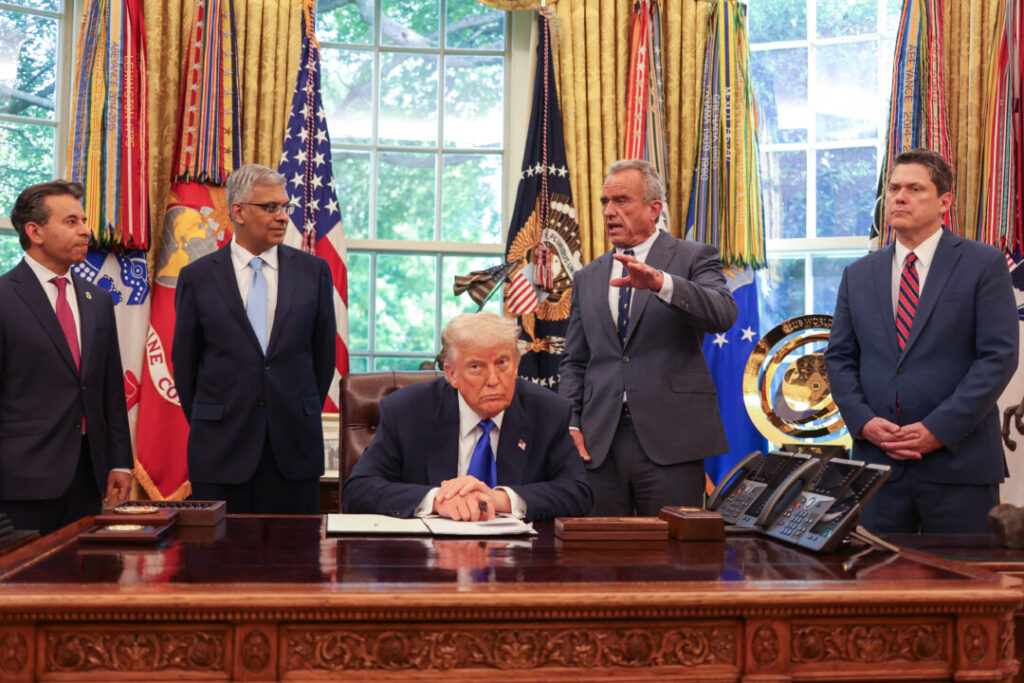The key focus of the executive order is to cut the deficit to shorten the timeline for building new plants.
WASHINGTON – President Donald Trump signed an executive order on Monday aimed at boosting domestic production of prescription drugs and reducing US dependence on the supply chain.
The order directs the Food and Drug Administration (FDA) to streamline the approval process for domestic manufacturing facilities by eliminating unnecessary regulations and accelerating reviews. The key focus is to cut the deficit within the Environmental Protection Agency (EPA) permitting process.
Trump called the order “very important” and said he would make a “big announcement next week” related to medicines.
According to the White House fact sheet, the EPA is directed to promote the construction of facilities involved in the production of prescription drugs, active pharmaceutical ingredients (APIs), and other important raw materials. The goal is to shorten the timeline for building new domestic pharmaceutical plants by reducing regulatory barriers.
Additionally, the order directs the FDA to increase inspections of foreign drug manufacturing plants and increase fees to encourage domestic production.
According to the fact sheet, there still remain significant barriers and gaps in establishing a resilient, affordable pharmaceutical supply chain in the United States.
“Industry estimates suggest that it will take five to ten years to build new manufacturing capacity for drugs and critical inputs, which is unacceptable from a national security standpoint,” the president’s executive order read. “Whether expanding existing capacity or modifying existing production lines to produce new or different products, it requires extensive permits and regulatory approval, making it even more difficult to make existing, unutilized drug manufacturing capabilities available domestically.”
The US generic drug supply chain remains heavily dependent on global production, with a significant portion of the raw materials and raw materials sourced from China.
Rosemary Gibson, co-author of China RX: Exposes the Risk of Exposing the Risk of US Reliance on China to Medicine, explains that after years of moving pharmaceutical production overseas and especially China, the US has lost its ability to produce many essential life-saving drugs.
China is the dominant supplier of pharmaceutical ingredients around the world. Gibson estimates that the US relies on China for 95% of the key ingredients needed for common drugs.
Even if the US ends up reducing its dependence on drugs sourced directly from China, it will still need to purchase medicines from countries that rely on China for key components such as active pharmaceutical ingredients (APIs) and key starting materials (KSM).
As part of an ongoing investigation, the government is gathering information from a variety of stakeholders, including industry leaders, trade organizations, academics and other thought leaders.
He said sectoral tariffs on drugs and semiconductors are “not available for negotiation” with other countries.
“They will only be part of re-firing the core national security items that need to be made in this country to the re-shore,” Rutnick said.



